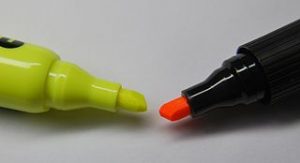A celebration is in order: The Associated Press Stylebook has officially banished that annoying hyphen from the word e-mail: It’s now email. And the good news isn’t over: website is now one word with no capital letter. Bring out the champagne!
Everyone who’s serious about writing should know how these decisions are made.
You should know, for example, that the Associated Press Stylebook is a usage reference book widely used by journalists, so this decision will have far-reaching effects and will probably spread beyond newspapers and magazines.
This is probably a good opportunity to review a few basic facts about hyphens.
Hyphens tend to disappear over time, so often you’re going to have to make a judgment call about including or excluding them. (I stopped using that hyphen in email years ago.)
- Use a hyphen when a) two describing words go together and b) a noun immediately follows.
The lawn-mower shop will be closed next week. (Shop is a noun: Use a hyphen)
I need to get my lawn mower serviced. (No hyphen)
- Don’t use a hyphen with –ly words.
That’s a poorly written story. (No hyphen)
To learn more about hyphens, click here.


